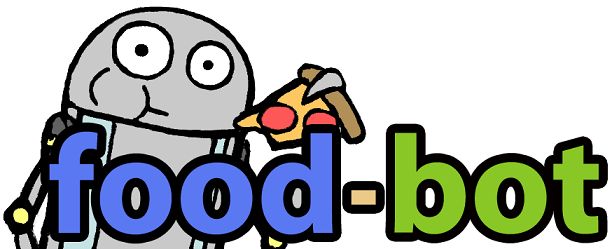"Food-bot," Friend of Starving Students, Wins Carnegie Mellon's Smiley Award
Byron SpiceWednesday, March 23, 2011Print this page.

Website Identifies Free Food at CMU, Pitt, Stanford and Other Universities
PITTSBURGH—If anything is more welcome to a college student than food, it's free food. And if anything is better than free food, it's knowing where to get it.
That's the idea behind Food-bot, a website for identifying events offering free food on college campuses and this year's winner of Carnegie Mellon University's Smiley Award. The $500 award is given by the CMU Computer Science Department and Yahoo! to students who have developed innovations in technology-assisted person-to-person communication. It gets its name from the ubiquitous Smiley emoticon, :-), created at Carnegie Mellon in 1982.
The award will be presented at a ceremony and reception — with free food, naturally — at 4 p.m., Friday, March 25 in the Rashid Auditorium of CMU's Gates and Hillman centers.
Food-bot, http://food-bot.com/, is the brainchild of Greg Woloschyn, who last spring earned a bachelor's degree in computer science at Carnegie Mellon. Food-bot began as a Gmail account; as a student, he subscribed to thousands of mailing lists and used a Gmail filter to delete any mail that didn't contain a food-related word.
"It was a surprisingly effective way of identifying free food," he said. "Effective as it was, I couldn't help but ask, 'Can we do better than this?'"
When he took a course on artificial intelligence taught by Ziv Bar-Joseph, associate professor of machine learning and computational biology, and Illah Nourbakhsh, associate professor of robotics, "I learned the concepts that I needed and was inspired to create an even better method for finding free food," he said. He subsequently developed automated methods for analyzing emails to detect mentions of free food and to extract information about the date, time, place and circumstances of these movable feasts.
Since graduation, Woloschyn, who will participate in the Smiley Awards ceremony via Skype, has worked as a software engineer for Qualcomm in Santa Clara, Calif. He has continued to hone Food-bot, however, and publicly launched the site last fall. It includes intelligence on free food at a dozen institutions of "higher eating," including the University of Pittsburgh, Stanford University and Johns Hopkins University, as well as his alma mater.
"It's a clever little use of technology that's fun and potentially useful for hungry students," said Scott Fahlman, research professor of computer science and language technologies and the inventor of the Smiley emoticon. The Food-bot website includes ratings not only of the food, but of the awkwardness of showing up unannounced, and includes estimates of how much time must be invested to get fed. "The website is light-hearted and amusing," Fahlman added. "That kinda fits with Smiley."
Honorable mention in this year's competition goes to Ian Li, a Ph.D. student in the Human Computer-Interaction Institute, and his "Write for Ten" project, http://writeforten.com/. A writing sketchbook, Write for Ten encourages participants to write something within 10 minutes — even if the writing isn't perfect or is incomplete. Participants are urged to do this each day as they establish a daily writing regimen. Li won the 2009 Smiley Award for another project, called Grafitter, http://www.grafitter.com/, and received an honorable mention in 2008 for MoodJam, http://www.moodjam.org/.
The Smiley Award, http://www.cs.cmu.edu/smiley/sa.html, was established in 2007 during the 25th anniversary celebration of Fahlman's invention of the Smiley emoticon. Fahlman recalls that his feat took all of 10 minutes, but it addressed a need in the early days of computing to let readers of online bulletin boards know when a writer was joking. It is a need that persists in this age of emails, Facebook posts and tweets. Fahlman said he hopes the prize will encourage development of more student projects that enhance person-to-person communication via computer, as the Smiley did in 1982.
Byron Spice | 412-268-9068 | bspice@cs.cmu.edu
